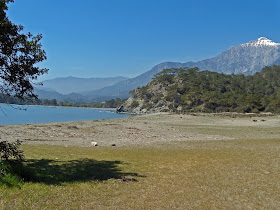When I visited Athens’ Archaeological Museum for the first time in the 1970s, I was fascinated by a group of marble sculptures gathered in the downstairs garden. Their provenance was off the island of Anticythera, rescued by sponge divers in the early days of the 20th century. The parts of the marble statues that sank into the sandy seabed had been well preserved but those that had been exposed to the salty water had suffered seriously from erosion. As a result, some statues had turned into grotesque shapes that still suggested their noble origins.
Key finds, however, were a life-size bronze statue of a young hero or god possibly from a Peloponnesian workshop made around 340-330 BC, the bronze head of a philosopher probably from a Cynic school created in the 3rd century BC and an intriguing lump of bronze gearwheels known as the Mechanism of Anticythera from the 2nd century BC. Other smaller items were evidence of daily life aboard the ship, such as cooking and storage vessels, ceramic tiles from the cabin’s roof as well as a number of bronze coins; also, some jewelry and fine glassware were found at the site. In 1976, Cousteau also explored the sea bottom and found more objects like small bronze statues but also bronze and silver coins, most of them minted in Pergamon.
All these objects were shipwrecked, apparently during a storm, near the island of Anticythera between 70 and 60 BC. The vessel, one of the largest of her time (twice the size of an average ship) could enter only a handful of harbors in Asia Minor among which Pergamon, Ephesos, Rhodes, and Delos. This led, together with the abovementioned coins, to the conclusion that the ship must have sailed from Pergamon, heading for Rome. At that time, Rome ruled over the eastern Mediterranean and Greek art was very popular.
Yet the story behind the so-called Mechanism of Anticythera is far more complex. Altogether 82 separate fragments have been retrieved but it is mainly the cluster of the three largest pieces that holds the story. This sophisticated machine dates from the 2nd century BC and initially nobody understood what it was. A handful of reconstructions were built mostly in the second half of the 20th century but early research lacked the technology we have today to visualize the intrinsic elements such as the use of digital photography, Ct-scans, surface imaging called PTM, and X-rays in 2-D and 3-D.
The technical details are far beyond my capabilities and my comprehension but I find it terribly exciting that such a complex mechanism ever existed two thousand years ago. The conclusion is that the mechanism was an astronomical calendar, a computer avant-la-lettre that enabled its user to track down the cycles of our solar system.
An in-depth analysis of the dials and their dents has revealed that the mechanism is based on a 19-year calendar with 223 lunar months, including eclipse predictions. All twelve months of the year have been identified and recognized as belonging to the Corinthian calendar. This led to believe that the mechanism was either constructed in Corinth or in one of its colonies like Syracuse, home of Archimedes. Researchers also deciphered a small dial serving to indicate the four-year cycle of the Olympic Games, the two-year cycle of the Nemean Games as well as the Delphic and Corinthian Games. The other side of the mechanism portrays the interaction of the Sun, Moon, stars, and all five planets.
Today it is generally accepted that this is an ancient analog computer and may well have been created by nobody less than Archimedes. After the Romans conquered Sicily, the mechanism was probably taken to Pergamon and finally lost at sea during its transfer to Rome in the first century AD.
There is this most interesting documentary posted on YouTube “Decoding the Mechanism of Anticythera” that shows a detailed approach to the entire research and its conclusions. It makes you wonder what would have happened if Archimedes had not been killed “by accident” by the invading Romans or if his heritage would have fallen into capable hands, i.e. somebody who could value – if not, understand - his inventions. It took mankind another thousand years to reinvent this machine!
There is this most interesting documentary posted on YouTube “Decoding the Mechanism of Anticythera” that shows a detailed approach to the entire research and its conclusions. It makes you wonder what would have happened if Archimedes had not been killed “by accident” by the invading Romans or if his heritage would have fallen into capable hands, i.e. somebody who could value – if not, understand - his inventions. It took mankind another thousand years to reinvent this machine!

































